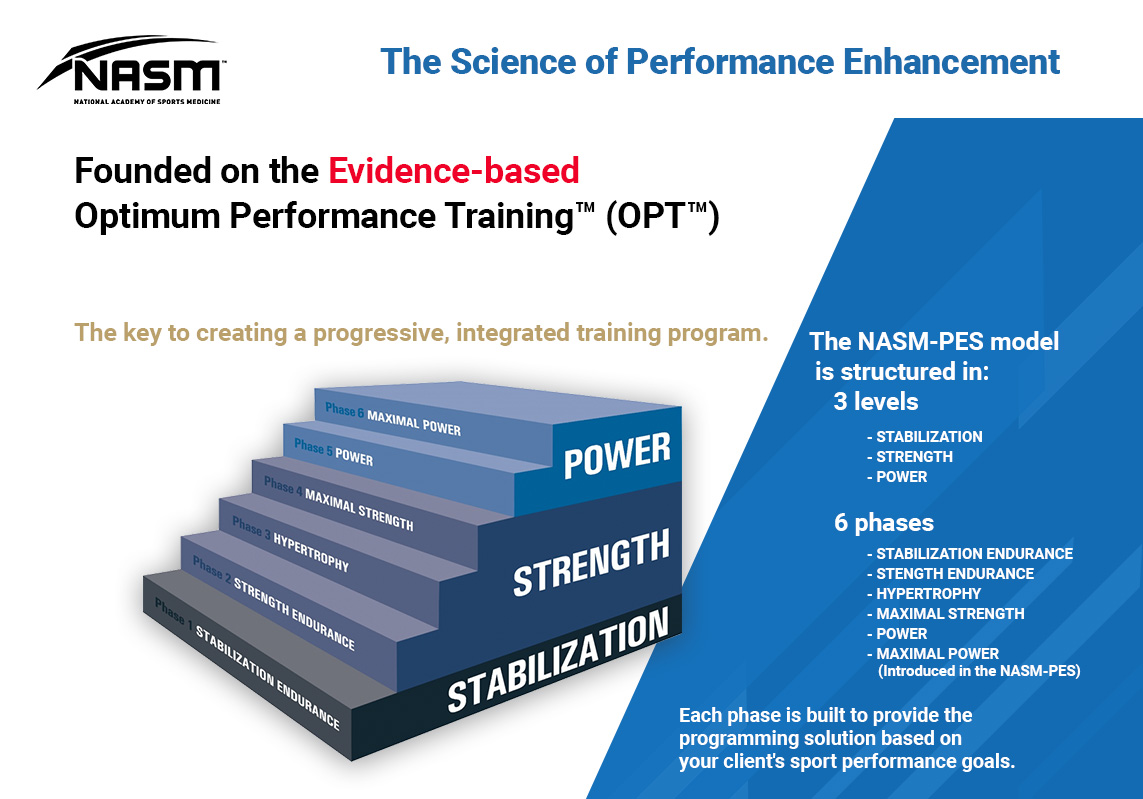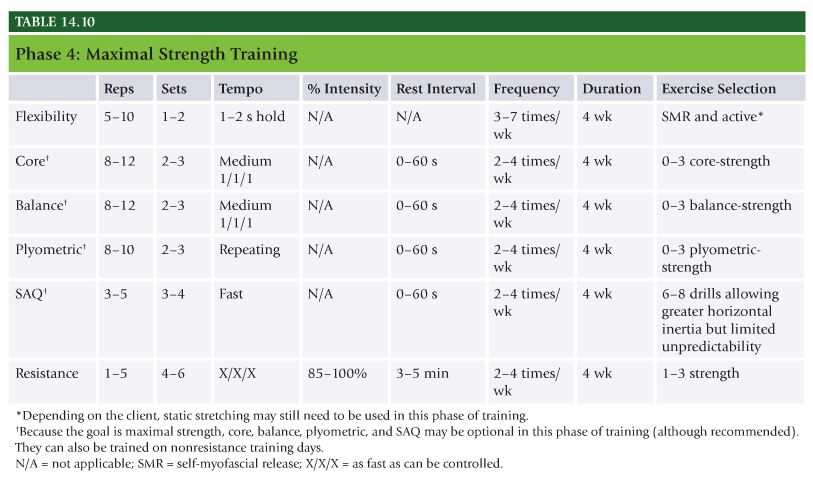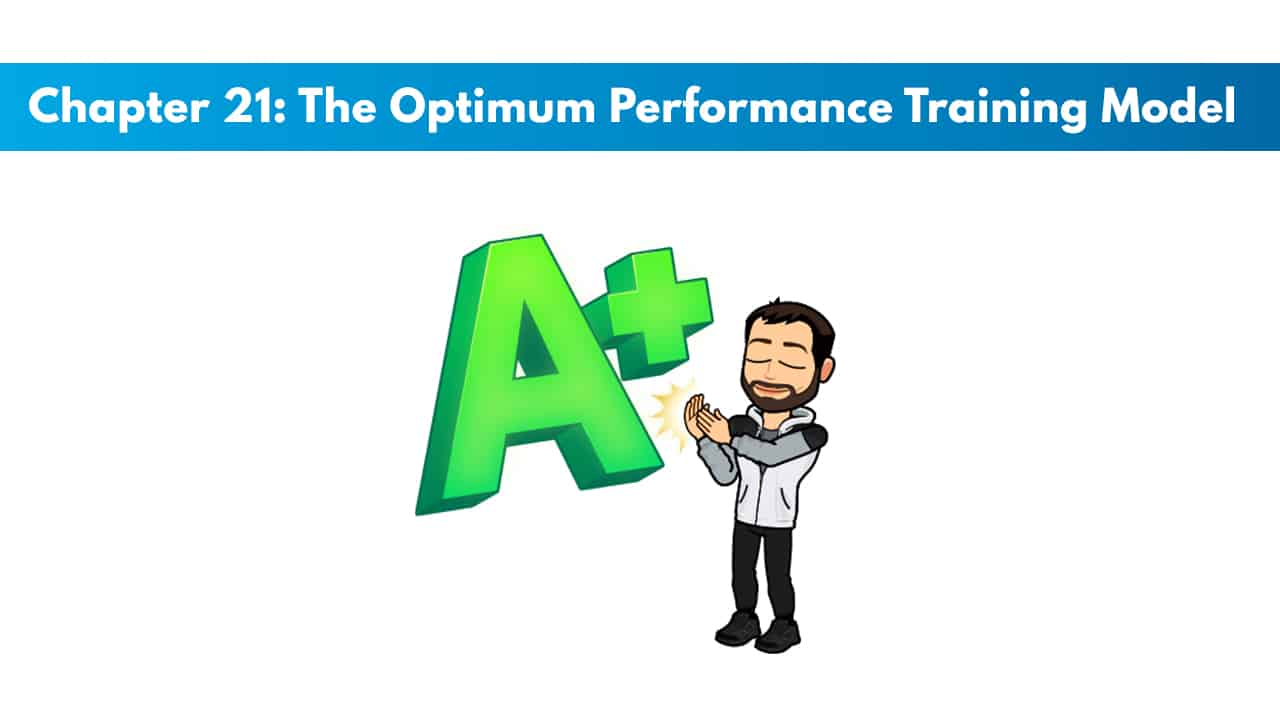The NASM Optimum Performance Training (OPT) Model Explained YouTube

Stabilization Endurance NASM's Optimum Performance Training
The Optimum Performance Training Model | NASM What is The OPT™ Model? Utilized for over 20 years with the world's top athletes, the NASM OPT™ Model, or Optimum Performance Training® Model, is a fitness training system developed by Dr. Mike Clark.

The Optimum Performance Training Model NASM
Utilized for over 20 years with the world's top athletes, the NASM OPT™ Model, or Optimum Performance Training Model®, is a fitness training system based on scientific evidence and principles, the model is highly adaptable and versatile in its application, progressing individuals through five distinct yet complementary training phases.

A Guide to the NASM Optimum Performance Training® Model
The data of 512 elderly patients were randomly divided into a 70% training set and a 30% validation set. The training set data is used to develop the prediction model, and the validation set data is used to verify the performance of the model. The performance of the model was evaluated by the AUC, ACC, recall, F1-score, and precision.

Learn the secret to safely and effectively unlock athletic potential with the PES NASM Blog
The Optimal Performance Training (OPT) Model, developed by NASM, is a systematic and progressive approach to address an individual's unique strength-increasing goals, their abilities, and their experience level. It has 5 phases, split among 3 levels, each designed to achieve a specific goals aligned to specific adaptations.

Stabilization Endurance NASM's Optimum Performance Training
Premier Global NASM's expert Tutor Craig explains the different stages and applications of the Optimum Performance Training (OPT) Model Are you interested in.

The Optimum Performance Training (OPT) Model YouTube
Microrobotics has opened new horizons for various applications, especially in medicine. However, it also witnessed challenges in achieving maximum optimal performance. One key challenge is the intelligent, autonomous, and precise navigation control of microrobots in fluid environments. The intelligence and autonomy in microrobot control, without the need for prior knowledge of the entire.

Perfect Performance Pyramid Ramsey Voice Studio
Utilized for over 20 years with the world's top athletes, the NASM OPT™ Model, or Optimum Performance Training Model®, is a fitness training system based on scientific evidence and principles, the model is highly adaptable and versatile in its application, progressing individuals through five distinct yet complementary training phases.

NASM OPT Model A Guide to Optimum Performance Training
The OPT model simultaneously improves all physical abilities, such as flexibility, muscular and aerobic endurance, core stabilization, balance, muscular strength, coordination, and power.

10 Tips for Effective Employee Performance Coaching AIHR
OPT Level 1: Stabilization Endurance. Reps: 12 to 20. (Single-leg workouts or arm variations: 10 reps each side) Sets: 1 to 3. Tempo: 4/2/1. Intensity: 50 to 70% of 1RM. Rest: 0 to 90 seconds. Circuit option: After warm-up, complete 1 set of all exercises with minimal rest between moves.

NASM Study Guide Chapter 14 Integrated Program Design and the Optimum Performance Training
The Optimum Performance Training® Model £ 145.00 Based on the principles of human movement science (i.e., biomechanics, kinesiology, exercise physiology) Uses an integrated approach to program design (i.e., combines all forms of exercise into one systematic and progressive system) Flexibility training Cardiorespiratory training Core training
.jpg?quality=low&width=900&name=OPT Model(1).jpg)
A Guide to the NASM Optimum Performance Training® Model
The NASM made the OPT model to be a planned, systematic, and periodized program for training. It is designed to improve all physical abilities mentioned throughout the textbook. This program should be used and thought of as a staircase, where you start in phase one and climb yourself up the final phase of power, phase 5.

Performance Fitness Training Swing Athletic
The NASM OPT (Optimum Performance Training) Model NASM OPT Model: Key Takeaways OPT Model Phase 1 - Stabilization Endurance Phase 1: Stabilization Endurance OPT Model Phase 2 - Strength Endurance OPT Model Phase 3 - Hypertrophy OPT Model Phase 4 - Maximal Strength OPT Model Phase 5 - Power Conclusion NASM OPT MODEL EXPLAINED

NASM Optimum Performance Training Model Manz Formação
Summary of Phase 3: Muscular Development (hypertrophy) Training. These are the NASM OPT Model Phase 3 acute variables for resistance exercises in hypertrophy and muscular development training. However, as our experts can attest, it is also important to pay attention to the flexibility, core, balance, plyometric and SAQ guidelines offered in.

Coaching for Optimum Performance Shine Models
Phase 1: Stabilization Endurance. Improve muscular endurance and body composition. Develop neuromuscular efficiency (coordination) Boost joint stability. Improve posture and flexibility. Stabilization endurance training is a prerequisite for the Strength and Power levels in the NASM OPT model.

NASM CPT 7th Edition Chapter 21 The Optimum Performance Training Model
The OPT Model, or Optimum Performance Training Model, is a fitness training system developed by NASM. The OPT Model is based on scientific evidence and principles that progresses an individual through five training phases: stabilization endurance, strength endurance, hypertrophy, maximal strength and power.

A Guide to the NASM Optimum Performance Training® Model
Model architecture refinement is a challenging task in deep learning research fields such as remote photoplethysmography (rPPG). One architectural consideration, the depth of the model, can have significant consequences on the resulting performance. In rPPG models that are overprovisioned with more layers than necessary, redundancies exist, the removal of which can result in faster training.